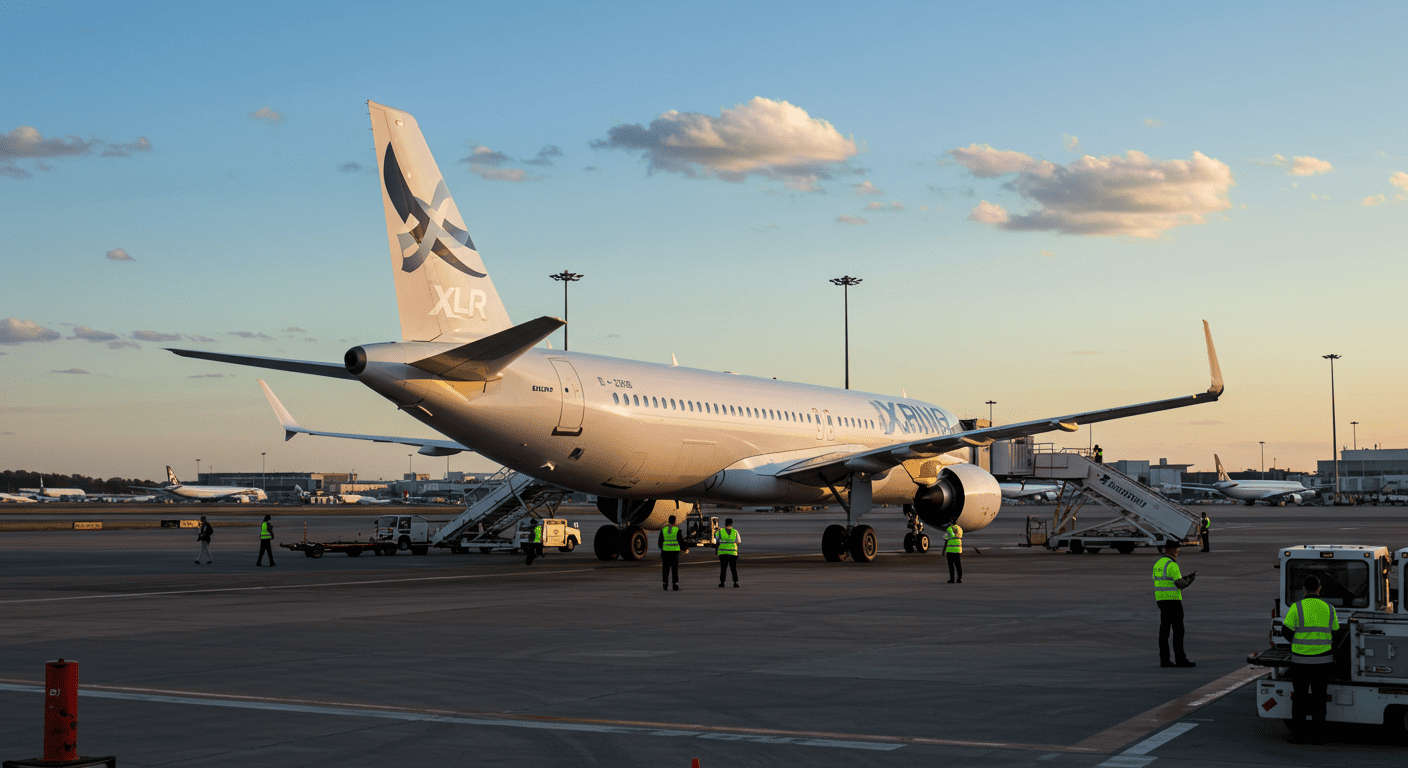By combining the efficiency of a single-aisle jet with intercontinental reach, the Airbus A321XLR is reshaping how airlines approach long-haul routes. This aircraft makes it possible to connect smaller cities directly, avoiding major hubs and offering passengers more convenient travel options.
Aircraft engine stand for rent
Overview of the Airbus A321XLR
The Airbus A321XLR represents a new frontier in aviation, combining narrow-body efficiency with wide-body range.
These enhancements give the aircraft a range of up to 4,700 nautical miles (8,700 kilometers), connecting distant city pairs like Rome to New York or Tokyo to Sydney—routes traditionally served by wide-body jets.
For airlines, the A321XLR lowers the financial risk of network expansion. It opens up new point-to-point routes, especially between secondary cities that may not have the demand to support a large wide-body jet.
Specifications and Performance of A321XLR
The A321XLR’s cabin flexibility is a key attribute, giving airlines the freedom to tailor layouts for specific routes. While it can accommodate up to 244 passengers in a high-density configuration, most operators opt for more spacious two-class arrangements of 180 to 220 seats to balance capacity with long-haul comfort.
This adaptability is evident in the diverse cabin layouts chosen by early operators:
- Iberia: A premium-focused configuration with 182 seats for transatlantic flights.
- Qantas: A 197-passenger layout.
- American Airlines: A spacious 155-seat, three-class cabin featuring 20 lie-flat business suites, 12 premium economy seats, and 123 economy seats.
Advanced engines and aerodynamics drive the A321XLR’s performance. Airlines can choose between two highly efficient options: the Pratt & Whitney PW1100G-JM and the CFM International LEAP-1A.
Passenger Experience on the Airbus A321XLR
The Airbus A321XLR is designed to provide a long-haul passenger experience comparable to that of a wide-body aircraft, centered around the Airbus Airspace cabin.
Several features enhance in-flight wellness:
- Advanced LED mood lighting: Mimics different times of day to help reduce jet lag.
- Upgraded air circulation: Refreshes cabin air every two to three minutes for a healthier environment.
- Thoughtful cabin design: Guarantees every window seat aligns perfectly with a window.
The high level of customization is a key advantage. The platform supports ultra-premium configurations, including lie-flat business class suites and lounge areas.
Airbus A321XLR Operators and Deliveries
The Airbus A321XLR entered service in November 2024 with launch operator Iberia. Following this debut, other major carriers like Qantas are set to introduce the aircraft in 2025, using its extended range to open new transcontinental and intercontinental routes previously unserviceable by a narrow-body jet.
The aircraft’s appeal extends beyond commercial airlines, with military operators like the Royal New Zealand Air Force adopting it for its versatility and efficiency. As production increases, the list of operators is expected to grow significantly.
A321XLR vs A321neo — Key Differences
The primary distinction is its ‘Extra Long Range’ capability. The A321XLR can fly up to 4,700 nautical miles (8,700 km)—a 15% increase over the 4,000-nautical-mile range of its sibling, the A321LR. This extended reach allows carriers to connect distant city pairs with the efficiency of a single-aisle aircraft.
This increased range stems from significant structural and engineering modifications:
- Permanent Rear Centre Tank (RCT): An integrated tank holding an additional 12,900 liters of fuel, unlike the A321LR’s optional, removable tanks.
- Increased Maximum Takeoff Weight (TOW): Raised to 101 tonnes to support the extra fuel weight.
- Structural Reinforcements: The landing gear and central wing box are strengthened to handle the demands of long-haul flights.
Beyond fuel and weight, these changes grant significant operational flexibility. While the A321neo and XLR share fuel-efficient engines and a passenger cabin, the XLR allows airlines to profitably operate long, thin routes—those with steady demand that does not justify the capacity of a wide-body jet.
Future of the Airbus A321XLR
By enabling more point-to-point routes, the A321XLR is set to change long-haul travel. Airlines are expanding their fleets to connect secondary cities globally, bypassing major hubs and benefiting from the aircraft’s significantly lower operating costs compared to wide-body jets.
Technological advancements, particularly in sustainability, are key to the A321XLR’s future. Airbus is targeting 100% Sustainable Aviation Fuel (SAF) capability by 2030. This goal, combined with the jet’s low fuel burn, gives it a significant environmental advantage over the older wide-body aircraft it is set to replace.
Read more:
- Airbus A320: Specifications, Features, and Seat Maps
- Airbus A340-300: Features, Specifications, and Performance
- Airbus A220: Features, Specs, and Benefits of the A220 Family
- Airbus Beluga: The Unique Transport Aircraft
- Airbus A340-600: Features, Specifications, and Performance
- Airbus A350: Features, Specs, and Innovations
- Airbus A319: Specifications, Seat Maps, and Features
- Airbus A321neo: Features, Specs, and Benefits
- Airbus A321: Specifications, Features, and Seat Maps
- Airbus A380: The Ultimate Guide to the World’s Largest Passenger Aircraft
- Airbus A330-300: Specifications, Seat Maps, and Amenities
- Airbus A350-900: Features, Specs, and Seating Guide
- Airbus A330: Specifications, Features, and Seat Maps

